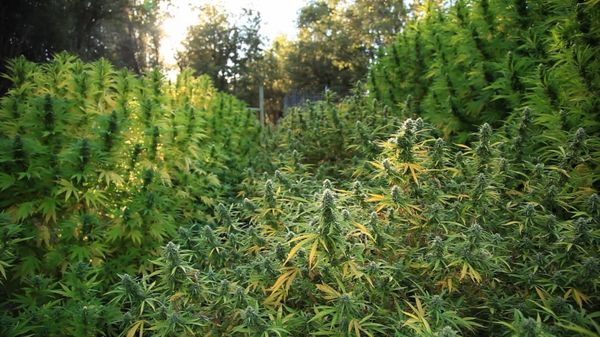- For decades cannabis growing focused on getting the highest yields possible, as quickly and efficiently and possible. For a long time most cannabis growers believed that to achieve this it was necessary to use chemical fertilisers.
- Fortunately, as the cannabis industry evolves and takes shape, this cultivation paradigm is also transforming. More and more growers are opting for organic farming, because not only can they get higher quality crops, but also ones that are healthier to consume, and more environmentally friendly.
- It seems that there are nothing but advantages! Join the organic farming trend by following a few simple steps that we outline below.

In this post we sum up, step by step, how to engage in organic cannabis growing, a simple and useful method to increase the quality of cannabis flowers. Here we will give you the basics to grow your crops using this method, but in future articles we will provide additional information on each stage, to clear up all your questions. Are you ready? Let's get to it!
Why grow organic?
There are many advantages to growing cannabis organically as compared to with chemical fertilisers, but they boil down to three: it is better for the plant, it is better for the consumer, and it is better for the environment.
For your health
You need to remember that whatever you give your plant will end up in your body when you consume its flowers, and you certainly do not want to take in a lot of chemicals whose long-term health effects are unknown. Not to mention that cannabis cultivated with organic products tastes much better, devoid of the harshness that often itches the throat characteristic of cannabis grown with chemicals.
For the environment
Although it is hardly catastrophic, it is not good for the environment to leave traces of chemicals in the soil or wastewater.
For your plants
Your cannabis plants will benefit from the use of nutrients of biological origin, which means greater resistance to plagues and diseases and an increase in the quality of your crops. The ultimate goal of the organic farming method that we propose is to promote and activate SAR (Systemic Acquired Resistance).
What is SAR and how does it affect your cannabis crop?
Systemic Acquired Resistance (SAR) is a resistance response by a plant occurring after exposure to a pathogen. You could say that the SAR system is analogous to the immune system in animals. When we speak of SAR we are referring, then, to a kind of plant "immune system".
If you use an inert substrate with which you have to feed the plant through chemical fertilisers, what happens is that the SAR of the plant will be weaker and have fewer "defences", to put it a certain way, against possible attacks by pests and diseases. Let's make a simple comparison to better understand this concept: if a person eats "fast food", that person will increase in size, and will probably become obese. This is certainly not equivalent to having good health, but quite the opposite, as he is bound to have a weakened immune system, and will be more likely to get sick than someone who follows a balanced diet.
Likewise, plants nourished with chemical fertilisers will be more vulnerable than those grown using an organic system. After all, you can't fool nature.
How to grow cannabis organically
To grow your plants with an organic method it is not enough to nourish them with organic products. Rather, you have to understand the cycles of nature, and to create a small ecosystem where all the factors are interrelated and contribute to the functioning of a chain of processes. This may seem very complicated to you, but it really is not. Read on!
Step No. 1: Logistical preparation
To determine what kind of pot you need, or how much space in your closet, the first thing you'll have to decide is what strain you are going to grow, and its characteristics. On this basis you can calculate how you're going to set up your indoor crop.
Step No. 2: Ready the environment
The earth you use is actually a breeding ground for many beneficial microorganisms vital to your plants' development. Cultivation with chemical fertilisers and pesticides has been based on an effort to destroy this microbial life and only provide those nutrients that the plant supposedly needs. We believe that this is a mistake. In this chapter we will explain how to prepare Super Soil, an appropriate way to activate the microbial life in your soil and provide the plant with the nutrients that it needs, through the substrate, naturally.
Step No. 3: Stimulate the soil
Once you have prepared the environment in which you are going to grow your cannabis plants – that is, the substrate – the next step is to activate the microbial life that will benefit them. This phase consists of two elements:
- The creation and application of compost teas
- The use of preventive methods (for pests and diseases)
Step No. 4: Irrigation and moisture control
In soil with microbial life, it is necessary to maintain a certain level of humidity: approximately 60%.
Step No. 5: Soil recycling
Once the harvest is over, there are techniques, like Bokashi, that will help you to recycle the substrate, to use it again, thereby completing the cycle.



Comments from our readers
Did you like this post?
Your opinion about our seeds is very important to us and can help other users a lot (your email address won't be made public).